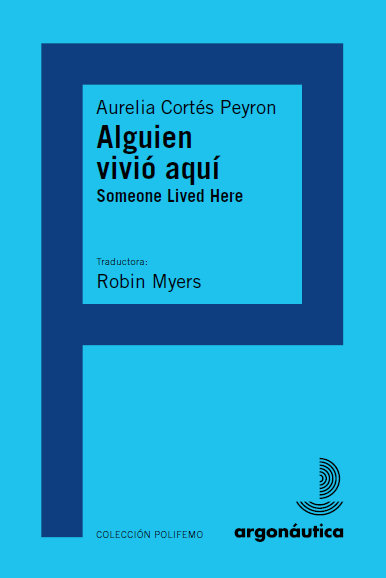
Alguien vivió aquí/Someone Lived Here (2018)
Aurelia Cortés Peyron
Traducción: Robin Myers
Monterrey: Argonáutica, Universidad Autónoma de Nuevo León
ISBN: 978-607-97572-2-9
pp. 446
Los poemas de Alguien vivió aquí trazan un camino de imágenes luminosas y experiencias destiladas hasta su naturaleza simbólica. La presencia latente del pasado se intuye en los márgenes de la enunciación, apenas fuera del alcance. Aurelia Cortés Peyron define el lenguaje como «la fachada de una casa demolida», y este libro se asemeja a una antigua construcción donde el lector puede entrar como un arqueólogo de la palabra, interpretar muros, umbrales, recovecos, y quedarse a vivir en ese espacio erigido por la voz de una poeta que refresca la tradición lírica desde una aproximación plenamente contemporánea. (Elisa Díaz)
The first poem in this wonderful first book of poetry, «Funambulist,» sets the tone and high standard for what follows, a razor-sharp precision of language, perfect balance of the tight-rope-walking author, and also its aerial point of view: «only footprints in the air remain, / only the traces / of vowels and other sounds / that tumble downward, lose the netless / thread that could save them.» The perspective is that of a maker who feels and knows much, perhaps indeed all: «I float / in conversation with the water.» The universal and essential are near enough to speak with us, in a zone where the coelacanth, a «living fossil,» is an «orphan fish that weights nothing in water.» There’s a maturity and daring of mind, as well as lyric urgency. It could be said all authors must build their own pleasure-house of language. In the work of Cortés Peyron, where the jacaranda «wets / in the air with the blue in its violet,» the pleasure of language is «on the verge of epidemic.» (Paul Hoover)


